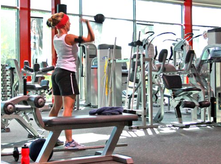 What you think is HELPING you in the gym might be speeding up the rate of DETERIORATION in your joints. Learn how to steer clear. The following is a guide to make your experience in the gym, pilates or yoga studio or personal training session as beneficial as possible. Your body has a position or design that must be maintained in order for all aspects and functions of the body to work as originally intended. There is a big difference between Posture Alignment Therapy and strength-weight-yoga-core training. Posture Alignment Therapy has a unique goal. Ask Yourself.... Why do you go to the gym? or the Yoga or Pilates Studio? What is it that you get out of it? Is it the burn? Is it that you feel stronger? Do you get relief from stress? Or the calming after effect? Perhaps it's to get out of pain. Or it's just fun. Or maybe it is a place to socialize. Whatever the reason, likely you have one or several for doing your workout. What if you could get much more out of your workout without sweating more or adding more weights? What if you could gain more range of motion, balance, flexibility, agility, more strength? What if you could really get out of pain? Hang on to those answers for a moment. 3 Planes of Motion The design of the human body is not only genius but it is necessary for very important reasons. The skeleton is supposed to stay vertically straight and horizontally level. Looking at the load bearing joints (ankles, knees, hips, shoulders joints) they should be stacked vertically and level horizontally with its pair. Imagine a ladder, the side supports are straight, vertical, the rungs are level horizontally. The junction of the rung and side supports are at 90 degrees angles. 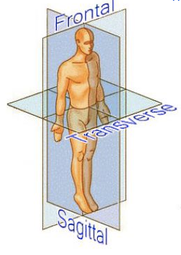 The musculoskeletal system - the human body - is designed to maintain this position. Change any of the joint positions, change any of the ladders supports or rungs, this will result in lack of stability, structural integrity, loss function, reduction in range of motion. Incidentally, all the organ systems of the body hang from this ladder-like configuration. Change the angles and position of the ladder, compress it and the organs (plus joints, bones, nerves, veins, muscles) are compressed too. Rotate it, the same components are rotated too--and were never intended to be. The body is made to have the ability to move and function in “3 Planes of Motion.” You are designed to bend forward and backwards - that is the Sagittal Plane. You can bend sideways which is moving in the Frontal Plane. You can twist and turn - that is the Transverse plane. Your joints are designed to move in these planes of motion too. If these Planes of Motions are inhibited, you will lack the ability to perform a task properly then other parts of the body will do jobs they were never designed to do. This is called "compensations". After periods of time these compensating body parts become dysfunctional and can not function at all or their function is greatly limited. (By the way.......Look around the Gym. Evaluate your workout. Are you exercising in ALL THREE PLANES OF MOTION? Why not?) Once your movement is altered, limited or impaired, your center of gravity will no longer be--well, centered! This again, creates wear and tear related symptoms in any of the joints or any of the components of the muscle and skeletal system (arthritis, stenosis, spondylolisthesis, disc bulges, herniations, meniscus tears/shredding, ACL/PCL tears, ligament and tendon damage, bunions, hammer toes, sprains, strains, sciatica, and the list goes on and on) as well as making the body ripe for the straw that tips the scales and injury happens. 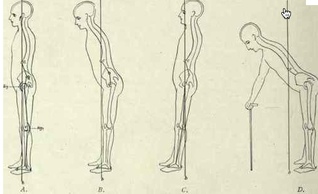 Test Yourself What if your center of gravity is off? Do this test before you do your workout. Stand comfortably. Close your eyes. Notice if you have more weight in one foot versus the other. No fudging. Pick a percentage like 60% for example in the right foot. Now, eyes closed, do you feel more weight in your toes or heels (if may be different for each foot). Maybe you have more weight in your heel on the left and more in your toes on the right. Last test, eyes still closed, do you have more weight in the inner edges of your feet or outside edges. Again the answer can be different for each foot. Imagine where your center of gravity has moved if you are not bearing weight equally front to back and side to side. Now inventory your aches and pains and compare them to how your body is bearing weight. If you are off balance or not centered, you have muscle imbalances. Some muscles are working harder and some not too much. Joints are pulled or moved out of position due to the imbalances. 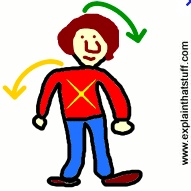 Now go do your workout and see if afterwards your center of gravity has been fixed. No, it hasn't because your workout is reinforcing the position of your joints, the tension of your muscles. In other words, chances are great your misalignments, your muscle imbalances are getting stronger. What did you just learn? You (like many people) have a "position problem" from muscle imbalances. You don't have a strength problem as much as a "position problem". It makes more sense to correct your "position problem" and then do your strengthening that way you are strengthening your good versus bad alignment. Strengthening already dysfunctional body parts will only result in stronger dysfunction body parts. If your hip or shoulder is in pain, chances are excellent there is a muscle imbalance keeping those joints misaligned which will stay misaligned unless someone like Posture experts help you learn how to reposition the joints. STRENGTH over dysfunction is stronger dysfunction. You have to get functional and properly aligned first then add strength on top of the proper FUNCTION. Your "position problem", your muscle imbalances can be resolved. It's not permanent unless you want it to be. OK, let's move on..... Exercise Instructors Whether it is Personal Trainers, Pilates or Yoga Instructors, they are trained in their specialty and are not Posture experts. Posture Alignment Therapists are trained in correcting your joint position from head to toe. They know how to ensure that you are strengthening your joints without straining them. Posture Alignment Therapists are trained in Biomechanics and help people use all of the muscles of the whole body the way the body was designed and the way the muscles were intended to function with synergy and full function. No one muscle or group of muscles is more or less important than another. Certain rehabilitative professionals have been quoted as saying "we don't get too much involved with the pelvis. The pelvis is a mystery." In the Posture Alignment world, the function or dysfunction of the pelvis has EVERYTHING to do with the proper function of EVERYTHING else in the body. Posture Alignment Therapists are specifically trained in and understand the workings of the pelvis. Your experience in your personal training sessions or in the Yoga or Pilates Studio can be enhanced if your body is properly aligned head to toe, all muscles are being used for their original jobs and all the joints, spinal components and pelvis are lined up and are engaging properly.  The alignment of all joints and parts is held in place INVOLUNTARILY by your muscles. Unless you are doing the posture alignment exercises you've been assigned by a certified Posture Alignment Therapist, you should NOT voluntarily, on purpose, move your pelvis, hips, shoulders, spine, legs, feet or knees in their proper position forcing your knees to points straight ahead or sticking your butt out to create a lumbar arch. This is faking posture alignment and it is a highly ineffective method which is not only temporary but can lead to many additional physical problems if done for long periods. (I've had discussions with clients -- they see how crooked they are when I point it out but they just can't believe those are problems linked to their pain or disabilities. They have THE best therapist or THE best trainer and they are working their muscles. How is it possible that after all that effort and expertise and energy that their bodies are positionally misaligned and still have pain. Many if not all workouts are working peripheral musculature and not the deep stabilizers of the pelvis, hips and spine. Nor is the goal complete structural alignment and fully functioning joint centration and movement. The emphasis is on "Pop" exercises-whatever is in vogue and especially whatever is cosmetically most appealing.) If your muscles are being stimulated properly then the muscles surrounding each joint or structure will be able to hold that structure in its optimal position for full function and no friction. If you have joints that are not in proper position and you are working out with muscle imbalances and joints out of position then you are reinforcing even strengthening those misalignments, those muscle imbalances and there will be friction in joints and wear and tear throughout your body. Get your whole body in proper position ESPECIALLY before your workout or class. This insures (among many other benefits) the most effective pilates, yoga or training workout and experience. 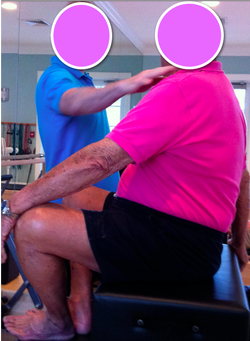 Working the Core. The word "core" in this context refers to the group of abdominal muscles. The popular belief is strengthening the core is imperative to having a strong back and trunk for good balance and stability. This belief is very limited in scope. You can have a super strong core (abs and back) and topple over from lack of plantar and/or dorsi flexion in the ankle or from knee joints being rotated or bow legs (like the man to the left) or knock knees, hip or butt pain, disc herniations and have stenosis and spondylolisthesis or any number of physical problems. Your gait can be very unsteady and dysfunctional but your stomach cosmetically looks good and is unnaturally tight. The upper spine can become Kyphotic (exaggerated spinal curve flexing the spine forward like the client on the left) and the pelvis can tip backwards due to overstrengthened abs this leads to a host of back (and other) problems--the very thing “working the core” was meant to avoid. Working your core to the exclusion of the other equally important body parts, joints and muscles is inadvisable. When doing Pilates, make sure you are seated vertically, ankle, knee and hip joints in hip width alignment, shoulder joints over hip joints. The lumbar spine should have a small arch by a slight pelvic tilt forward. If the knees flop open like this person above, use a strap to give the legs something to rest against. Remember, Pilates is a strengthening program. If your joints are misaligned like 95% of the population, you have a POSITION problem not a strength problem. Therefore you need a program that will help you correct the joint POSITIONS. Using a strengthening program to fix POSITION problems will result in stronger out of POSITION joints and further muscle imbalance. 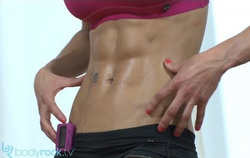 Because MUSCLES MOVE BONES, when one muscle is too tight the bones it attaches to are pulled out of healthy position. Ab muscles attach to the pelvis at the pubic bone area and under the lower ribs. If too tight, the abs pull the pelvis up in the front tipping it backward and pulls the upper back/spine forward. This rounds the upper body, spinal vertebrae and shoulders and the head comes forward. It is very common for people with their pelvis tipping back and down to have flat buttocks (which unplugs their glute muscles -important hip extensors), a flat lumbar spine now prone to symptoms like stenosis, disc herniations/bulges, arthritis and tight hamstrings all because the abs are so tight and other muscles weak there is no way for the pelvis to remain level. This seriously compromises the vertical efficient weight bearing posture, what follows is pain, structural compensation and dysfunction. Go ahead, tighten your bicep. Hold it nice and tight for the next 8 hours. Why contract your bicep continuously....then why contract your abs continuously? Why not tighten your thighs or buttocks? You are tightening your abs unconsciously every time you reach across the table for your pen or the salt. To illustrate just one example, if your pelvis juts or shifts out to the sides or you feel unstable on your feet/legs, your pelvic musculature needs to be systematically retrained for proper function not your core. The pelvis (not the abs!) must form a solid level foundation for the upper body and the lower body. Make sure all the muscles and joints have the ability to stabilize and move joints and bones efficiently with full function as they are designed. Use Pilates to get strong but make sure your Posture is in alignment first so you are not strengthening your dysfunctions. That is the healthy way to go. Many people don't know, doing abdominal sit ups utilize the trunk flexors (the abs) AND depending on how high the upper body comes up off the ground, the hip flexors (powerful groin muscles). Crunching your abs where your upper body comes up higher than 6 degrees off the ground, you are now strengthening your hip flexors too. Hip flexors flex the hip and if overly strong will pull the pelvis forward and down. The pelvis should be level not tipped forward, forward and down or backward. If your pelvis is already tilted forward (anterior pelvic tilt or you have been told you have lordosis) you are now increasing the tilt, your lumbar curve (lordosis) and the dysfunction. Weight Machines are likely strengthening and reinforcing your postural misalignments. When you use weight machines, your posturally misaligned body (meaning you have rotations or elevations in your pelvis, or your feet, ankles or knees or shoulder joints have deviated from the original design position) is situated in or on the gym equipment. The gym equipment is targeting a muscle group in isolation of other muscles. This is unnatural since the body never recruits one muscle group at a time in isolation. Weight machines don't mind if one side of your pelvis is elevated higher than the other side and your spine and shoulder girdle and head are sitting on a very unlevel pelvic platform. You’re putting a crooked compensating body in a static apparatus then engaging isolated muscles which does nothing to address or correct posture compensations and dysfunctions in the area you are working or in any other area of your body. You are adding strength on top of the compensations and dysfunctions. The machine won’t straighten up crooked parts-it is only strengthening one targeted piece of your total musculoskeletal system. The machine will strengthen the crooked parts so now your misaligned joint positions and muscle imbalances are stronger, not straighter but stronger. Not a strength training protocol 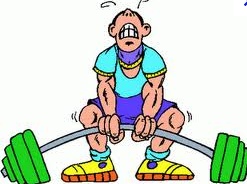 There is a BIG difference between strength training and Posture Alignment Therapy. For instance, the machine for adductor presses is designed to be used to actually strengthen the adductor muscles, using a strength training protocol, which is not what your Posture Alignment Therapy exercises are doing. Doing machine adductor presses all day isn’t going to fix posture problems, it can potentially reinforce the disconnected structures and functions in your body and lead to Postural, structural and potentially organ related problems. The Posture Alignment exercises are used to produce a structural change. For instance, knee pillow squeezes are used to create a structural change in the hips, pelvis and spine. We see the outcome immediately. This immediate change causes other muscles to engage, which usually results in the client feeling “stronger” or more “stable”. 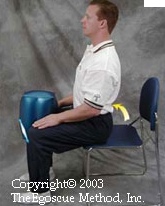 Pelvic instability is a great example: if your pelvis tilts backward (posterior pelvis), this position lacks stability in the pelvis and hip joints. With some quick knee pillow squeezes, gluteal contractions, and maybe one or two spinal extension exercises after walking you notice you are stable and feel “stronger” than before the exercises. But we did not strengthen, we engaged muscles in a certain way to change the position of the pelvis and spine structurally which makes it more functional and structurally stable and causes other muscles to engage properly. We’re not moving the leg in and out in the Adductor Press machine in a full concentric and eccentric range of motion. The ankle, knee and hip joints are lined up and there is an isometric contraction going on in the hip joint-very little movement. 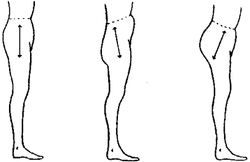 You Can Have Proper Form and Still Get Injured If you're using an adductor press machine where you are in a sitting position, and you will most likely end up sitting with a posterior pelvis and flexed spine. This is a big problem not only from a structural stand point, but also when we look at how ineffective this makes the exercise if the client’s goal is to strengthen their adductors. The bad pelvic position alone is going to engage more muscles in the pelvis than just the adductors targeted. This will also eventually cause other problems, usually showing up as pain. We want our clients to have good position no matter what exercise they are doing in the gym. If you take a body with bad structure to a workout, then most likely the compensating muscles will get the stimulus, and this can feed into your posture problems and pain and be set up for injury too.
Bottom line…The body responds to the stimulus you give it, make sure you are making good choices in making your body better, not worse. As Frank Parmelee, certified Posture Alignment Therapist says: “Health Club/Gym training is driven more by cosmetics than by muscle, joint, body function. There is too much focus on abdominals, pecs, quads. sit-ups, bicep curls, bench press, leg presses. Unfortunately, this perpetuates muscle imbalances which desk jobs, sedentarism, and poor posture already have created. Namely, this creates an over emphasis on the strength of flexors, adductors, internal rotators, pronators, jaw closers, and shoulder girdle elevators while inhibiting extensors, abductors, external rotators, supinators, jaw openers, & shoulder girdle depressors. Popular physical training seldom is focused on postural muscles and proper joint mechanics.” **************************************************************************************** Posture Alignment Therapy is offered by The POSTURE Clinic. Catee Ingwersen is the Director and Posture Alignment Specialist certified by the Egoscue University. She is a recommended Affiliate therapist. The Egoscue Method was created by Pete Egoscue. This method is a world leader in non medical pain relief and postural alignment which leads to developing the musculoskeletal system of the human body by training the proper muscles of the entire body. It does not focus on symptoms but rather treats the body as a unit with an emphasis on eliminating noxious stimuli to correct dysfunctions and compensations that make natural movements, function and gait impossible. Call 772-559-1532 for information or an appointment.
0 Comments
Leave a Reply. |
AuthorCatee Ingwersen is an Egoscue certified Posture Alignment Specialist and Licensed Massage Therapist. Archives
June 2018
Categories
All
|
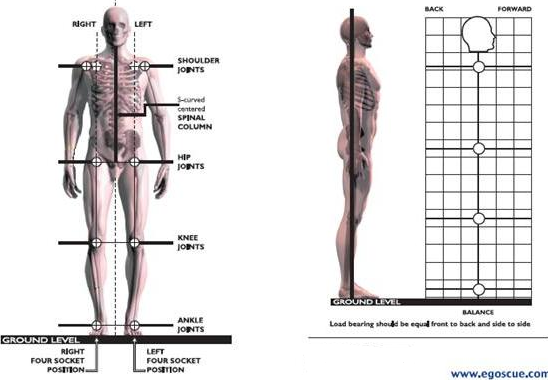
 RSS Feed
RSS Feed